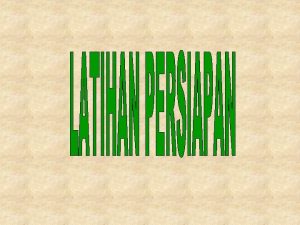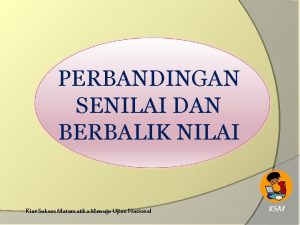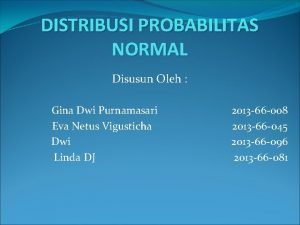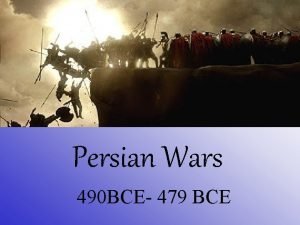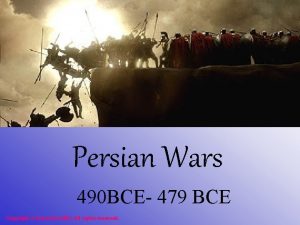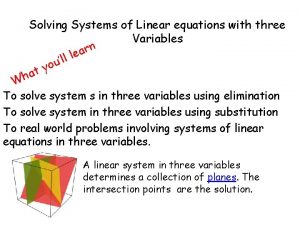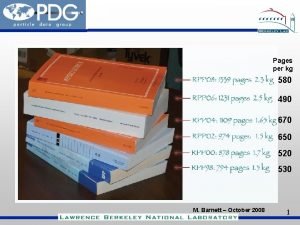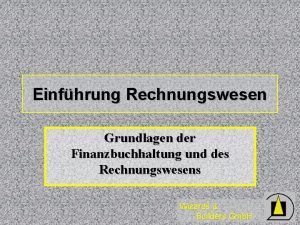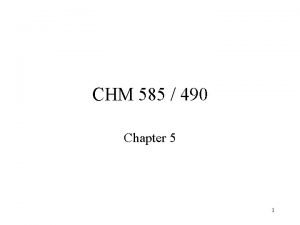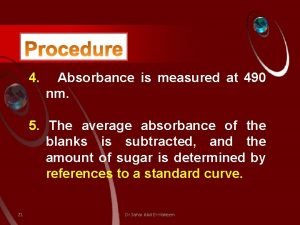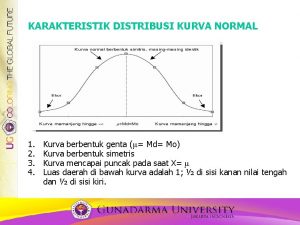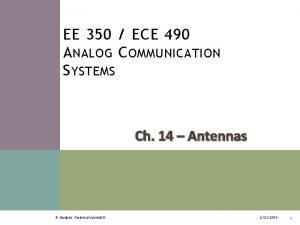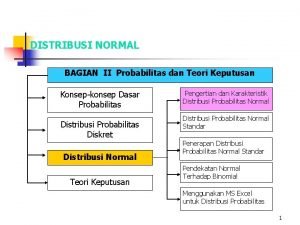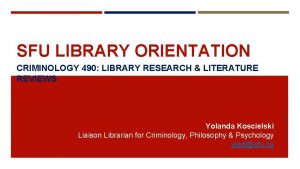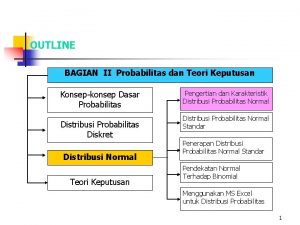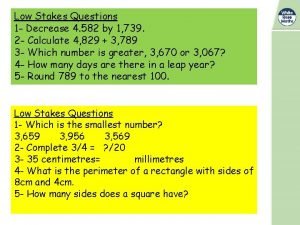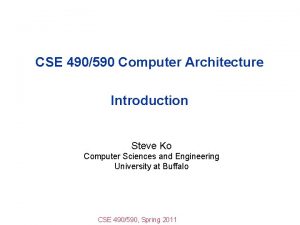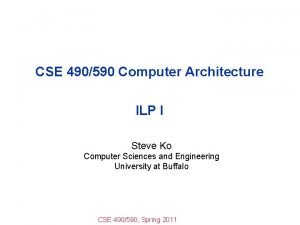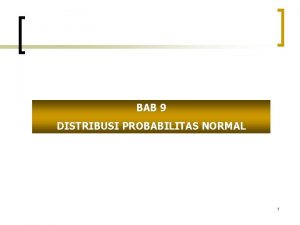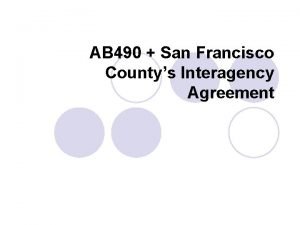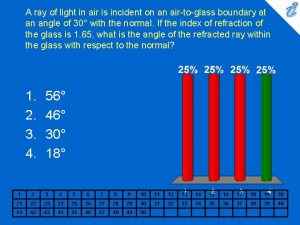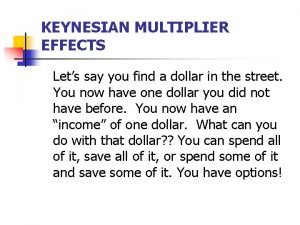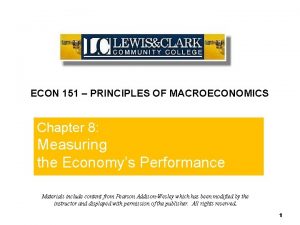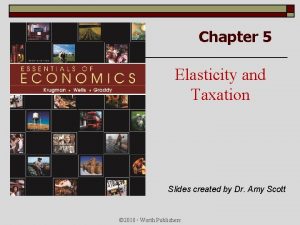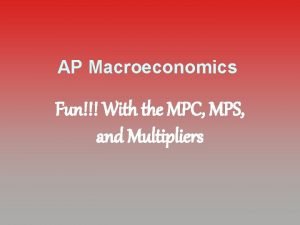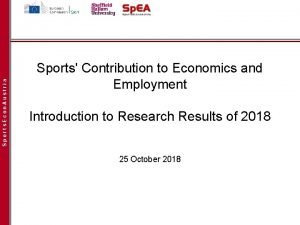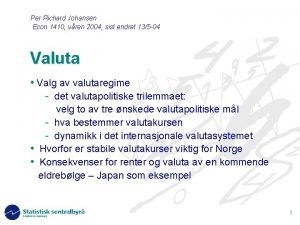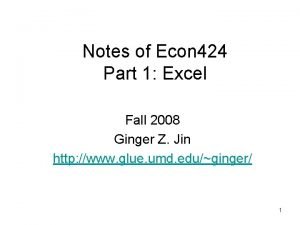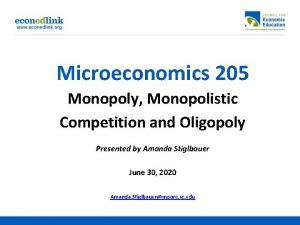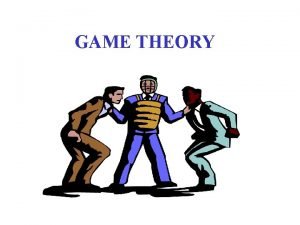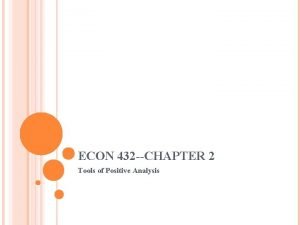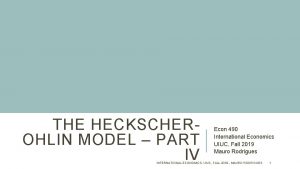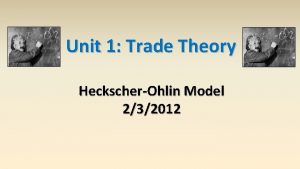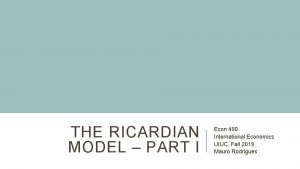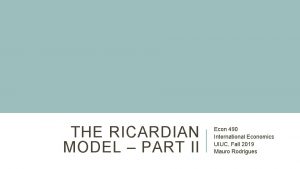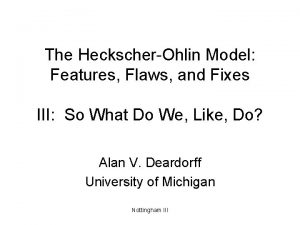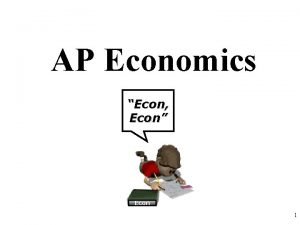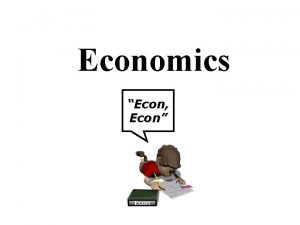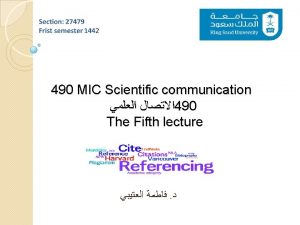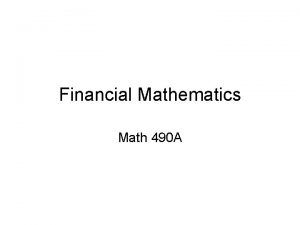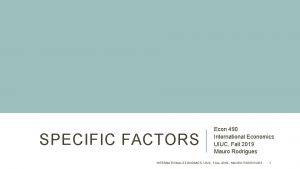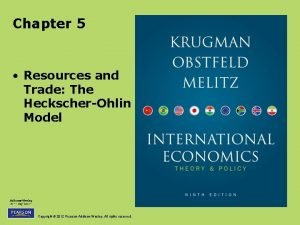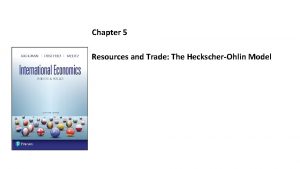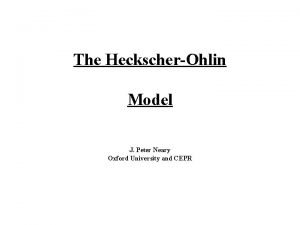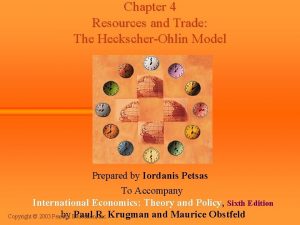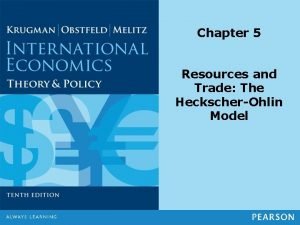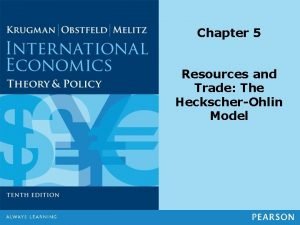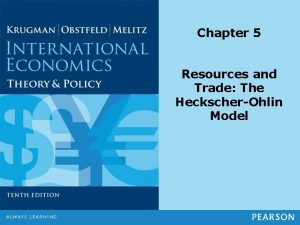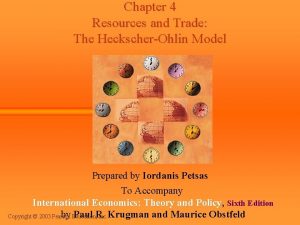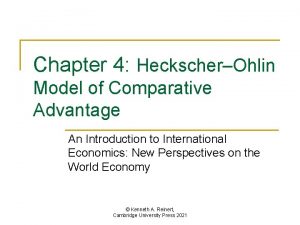THE HECKSCHEROHLIN MODEL PART III Econ 490 International









































- Slides: 41

THE HECKSCHEROHLIN MODEL – PART III Econ 490 International Economics UIUC, Fall 2019 Mauro Rodrigues INTERNATIONAL ECONOMICS, UIUC, FALL 2019 - MAURO RODRIGUES 1

TRADE Two Countries INTERNATIONAL ECONOMICS, UIUC, FALL 2019 - MAURO RODRIGUES 2

Figure 1 Home and Foreign PPFs HOME FOREIGN

TRADE Relative supply curves INTERNATIONAL ECONOMICS, UIUC, FALL 2019 - MAURO RODRIGUES 4

Figure 2 Constructing Relative Supply Curve (Home) RELATIVE SUPPLY PPF A RS B

TRADE Relative Supply Curves INTERNATIONAL ECONOMICS, UIUC, FALL 2019 - MAURO RODRIGUES 6

Figure 3 Home and Foreign Relative Supply Curves RS RS*

TRADE Relative demand curve (RD) INTERNATIONAL ECONOMICS, UIUC, FALL 2019 - MAURO RODRIGUES 8

Figure 4 Relative Demand Curve RD = RD* INTERNATIONAL ECONOMICS, UIUC, FALL 2019 - MAURO RODRIGUES 9

AUTARCHY Equilibrium INTERNATIONAL ECONOMICS, UIUC, FALL 2019 - MAURO RODRIGUES 10

Figure 5 Autarchy Equilibrium RS RS* RD = RD*

TRADE Open economy equilibrium INTERNATIONAL ECONOMICS, UIUC, FALL 2019 - MAURO RODRIGUES 12

Figure 6 Open economy equilibrium RS RS* RD = RD*

TRADE Open economy equilibrium INTERNATIONAL ECONOMICS, UIUC, FALL 2019 - MAURO RODRIGUES 14

THE HECKSCHER-OHLIN THEOREM Summarizing KEY RESULT A country will export the good which intensively uses the relatively abundant factor of production INTERNATIONAL ECONOMICS, UIUC, FALL 2019 - MAURO RODRIGUES 15

TRADE Open economy equilibrium Home country: Capital abundant, labor scarce Exports capital intensive good (good 2) Imports labor intensive good (good 1) Foreign country: Labor abundant, capital scarce Exports labor intensive good (good 1) Imports capital intensive good (good 2) INTERNATIONAL ECONOMICS, UIUC, FALL 2019 - MAURO RODRIGUES 16

WELFARE Community Indifference Curves Let’s assume all the conditions, from the demand side, to have community indifference curves (see slides for the Ricardian Model) Consumers have identical and homothetic preferences They like both good 1 and good 2 Indifference curves are convex towards the origin and do not touch axes Community indifference curves give an idea of the average impact of trade in welfare: Add gains and losses, and find the net result INTERNATIONAL ECONOMICS, UIUC, FALL 2019 - MAURO RODRIGUES 17

WELFARE Community Indifference Curves INTERNATIONAL ECONOMICS, UIUC, FALL 2019 - MAURO RODRIGUES 18

Figure 7 Welfare Imports HOME Exports B A, A* – autarchy (production = consumption) B, B* – open-economy production C, C* – open-economy consumption FOREIGN C* A* A B* C Imports Exports

WELFARE Gains from trade Trade raises welfare for both countries: This is the net result, which adds losses and gains In other words, gains outweigh losses But there are winners and losers Remember the Stolper-Samuelson theorem: An increase in the relative price of good 1 leads to an increase in wages and a decrease in the rental rate of capital (in real terms) Relationship illustrated in the next slide Trade affects this relative price It decreases for the Home country and increases for the Foreign country INTERNATIONAL ECONOMICS, UIUC, FALL 2019 - MAURO RODRIGUES 20

Figure 8 Effect on factor prices

DISTRIBUTIVE EFFECTS OF TRADE Effect on factor prices Home country (capital abundant): Relative price of good 1 falls Rental rate of capital increases Wage rate falls Foreign country (labor abundant): Relative price of good 1 increases Wage rate increases Rental rate of capital falls Increases/decreases in factor prices are in real terms INTERNATIONAL ECONOMICS, UIUC, FALL 2019 - MAURO RODRIGUES 22

DISTRIBUTIVE EFFECTS OF TRADE Summarizing KEY RESULT Owners of a country’s abundant factor benefit from trade, but owners of a country’s scarce factor lose INTERNATIONAL ECONOMICS, UIUC, FALL 2019 - MAURO RODRIGUES 23

DISTRIBUTIVE EFFECTS OF TRADE Effect on factor prices Home country: Capital – abundant factor Labor – scarce factor Foreign country: Labor – abundant factor Capital – scarce factor Moreover, trade makes factor prices to converge This is the Factor Price Equalization Theorem INTERNATIONAL ECONOMICS, UIUC, FALL 2019 - MAURO RODRIGUES 24

FACTOR PRICE EQUALIZATION THEOREM Summarizing KEY RESULT If there are no barriers to trade and both countries produce the same set of goods, then their factor prices will be the same INTERNATIONAL ECONOMICS, UIUC, FALL 2019 - MAURO RODRIGUES 25

DISTRIBUTIVE EFFECTS OF TRADE Discussion In each country, there are winners and losers But overall trade is Pareto efficient Taken together, gains outweigh losses This means that there are possible redistributions so that nobody is worse off Compensate potential losers INTERNATIONAL ECONOMICS, UIUC, FALL 2019 - MAURO RODRIGUES 26

DISTRIBUTIVE EFFECTS OF TRADE Discussion From factor prices to income distribution: Each person is endowed with capital and labor; income therefore comes from these two factors Changes in factor prices will affect this income Suppose labor is more evenly distributed than capital (in both countries); and that capital owners tend to be richer Therefore, trade affects income distribution Income becomes even more concentrated in the Home country (rental rate rises, wage falls) And less concentrated in the Foreign country (wage rises, rental rate falls) INTERNATIONAL ECONOMICS, UIUC, FALL 2019 - MAURO RODRIGUES 27

MORE ON WELFARE Effect on world relative prices Krugman, Obstfeld and Melitz, chapter 6 Analyze how changes in one country affects the other Through movements in relative prices Country sizes are not infinitesimal (can affect world relative prices) Home and Foreign already under free trade Analyze how changes in factor endowment in one country affect both economies INTERNATIONAL ECONOMICS, UIUC, FALL 2019 - MAURO RODRIGUES 28

MORE ON WELFARE World relative prices In an open economy, relative prices are the result of the interaction between world supply and demand Assume homogeneous preferences: Home Relative Demand = Foreign Relative Demand = World Relative Demand However, Relative Supply curves are not the same because of differences in labor endowments World Relative Supply will be somewhere between Home and Foreign Relative Supply Exact location will depend on country sizes Open economy equilibrium: World Relative Supply = World Relative Demand INTERNATIONAL ECONOMICS, UIUC, FALL 2019 - MAURO RODRIGUES 29

Figure 9 World economy equilibrium RS RSW RS* A RD = RD* = RDW

MORE ON WELFARE Increase in Foreign labor productivity INTERNATIONAL ECONOMICS, UIUC, FALL 2019 - MAURO RODRIGUES 31

Figure 10 Increase in labor productivity in the Foreign country RS RSW’ RS*’ A B RD = RD*

MORE ON WELFARE Increase in Foreign labor productivity INTERNATIONAL ECONOMICS, UIUC, FALL 2019 - MAURO RODRIGUES 33

Figure 11 FOREIGN Increase in labor productivity in the Foreign country (Foreign welfare) C*’ C* Change in terms of trade is not sufficiently strong Welfare increases C*’’ P* P*’ INTERNATIONAL ECONOMICS, UIUC, FALL 2019 - MAURO RODRIGUES 34

Figure 12 Immiserizing growth FOREIGN C* If decline in terms of trade is not sufficiently large Initial consumption point is no longer available Welfare falls C*’’ P*’’ P* P*’ INTERNATIONAL ECONOMICS, UIUC, FALL 2019 - MAURO RODRIGUES 35

MORE ON WELFARE Increase in Foreign labor productivity INTERNATIONAL ECONOMICS, UIUC, FALL 2019 - MAURO RODRIGUES 36

Figure 13 Increase in labor productivity in the Foreign country (Home welfare) HOME P ’ P C’ C

MORE ON WELFARE Increase in Foreign supply of capital INTERNATIONAL ECONOMICS, UIUC, FALL 2019 - MAURO RODRIGUES 38

Figure 14 Increase in supply of capital in the Foreign country RS B RSW’RS WRS*’ RS* A RD = RD*

Figure 15 Increase in supply of capital in the Foreign country (Foreign welfare) FOREIGN C*’’ C* P*’’ P* INTERNATIONAL ECONOMICS, UIUC, FALL 2019 - MAURO RODRIGUES 40

Figure 16 Increase in supply of capital in the Foreign country (Home welfare) HOME P P ’ C’ C
 Hamlet act iii scene ii
Hamlet act iii scene ii Jarak 490 km ditempuh sebuah mobil dengan bensin 35 liter
Jarak 490 km ditempuh sebuah mobil dengan bensin 35 liter Makanan yg disediakan pengusaha ternak selama 30 hari
Makanan yg disediakan pengusaha ternak selama 30 hari Harga saham di bej mempunyai nilai tengah 490 7
Harga saham di bej mempunyai nilai tengah 490 7 490 bce
490 bce 490 bce
490 bce A theater has 490 seats
A theater has 490 seats Raspberry pi 490
Raspberry pi 490 Ece 490
Ece 490 Ece 490
Ece 490 Cse 490
Cse 490 580-490
580-490 Rechnung abgrenzen
Rechnung abgrenzen Ece 490
Ece 490 Ch 490 study guide
Ch 490 study guide Absorbance 490 nm
Absorbance 490 nm Harga saham di bej mempunyai nilai tengah 490 7
Harga saham di bej mempunyai nilai tengah 490 7 Ee 350
Ee 350 Harga saham di bej mempunyai nilai tengah 490 7
Harga saham di bej mempunyai nilai tengah 490 7 Crim 490 study guide
Crim 490 study guide Contoh soal probabilitas teori pengambilan keputusan
Contoh soal probabilitas teori pengambilan keputusan 582 x 4
582 x 4 490590
490590 490590
490590 Pt gs mengklaim rata rata berat buah mangga
Pt gs mengklaim rata rata berat buah mangga Ab 490
Ab 490 A light beam in air is incident upon a still water surface
A light beam in air is incident upon a still water surface Kr e 490
Kr e 490 Va handbook 5017 part iii appendix a
Va handbook 5017 part iii appendix a Government expenditure formula
Government expenditure formula Accelerator effect economics
Accelerator effect economics Flipitecon
Flipitecon Econ 151
Econ 151 Mid point formula econ
Mid point formula econ Mps ap macro
Mps ap macro Marginal analysis econ
Marginal analysis econ Sports econ austria
Sports econ austria Econ 1410
Econ 1410 Econ 424
Econ 424 Mr darp econ
Mr darp econ What is game theory
What is game theory Define positive analysis
Define positive analysis

